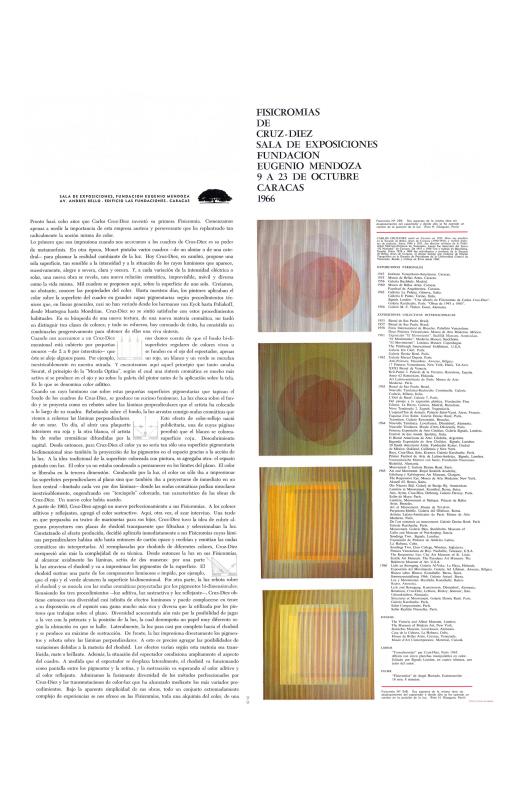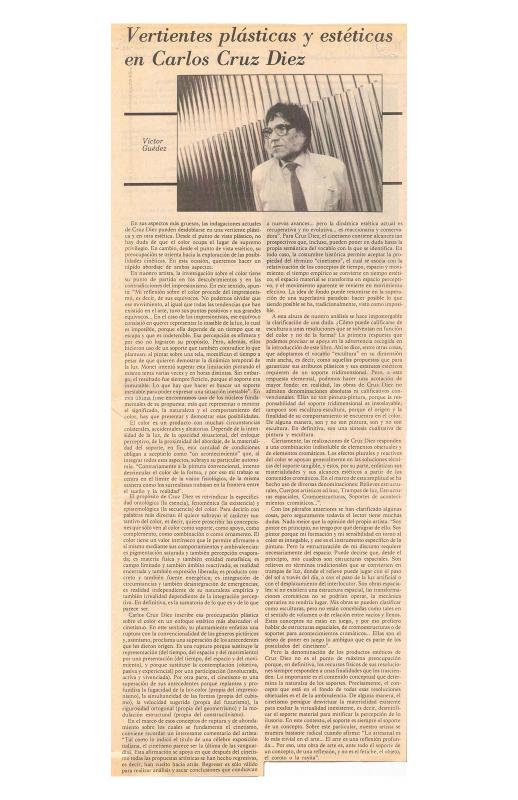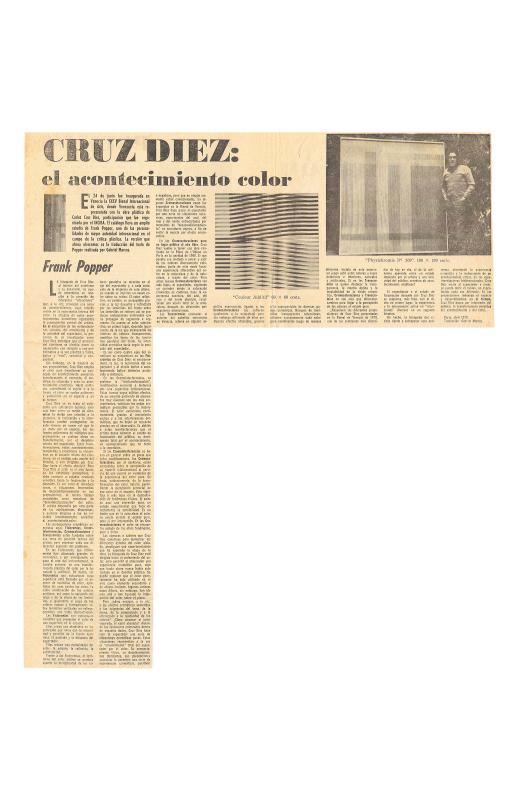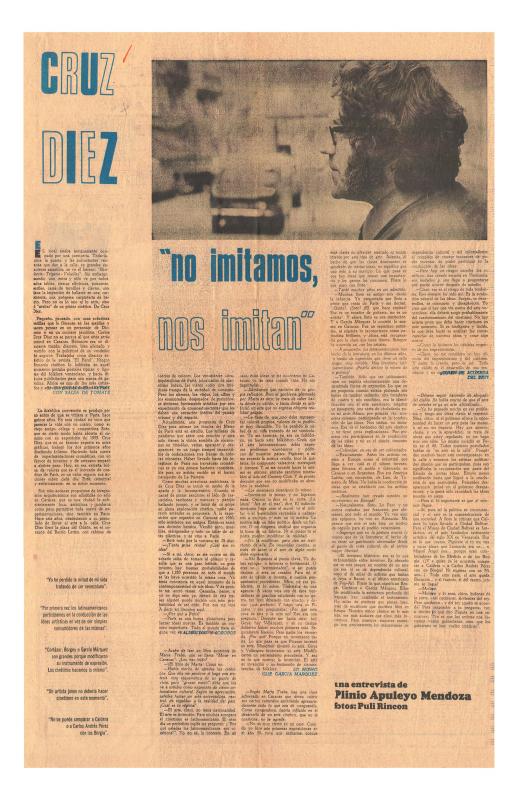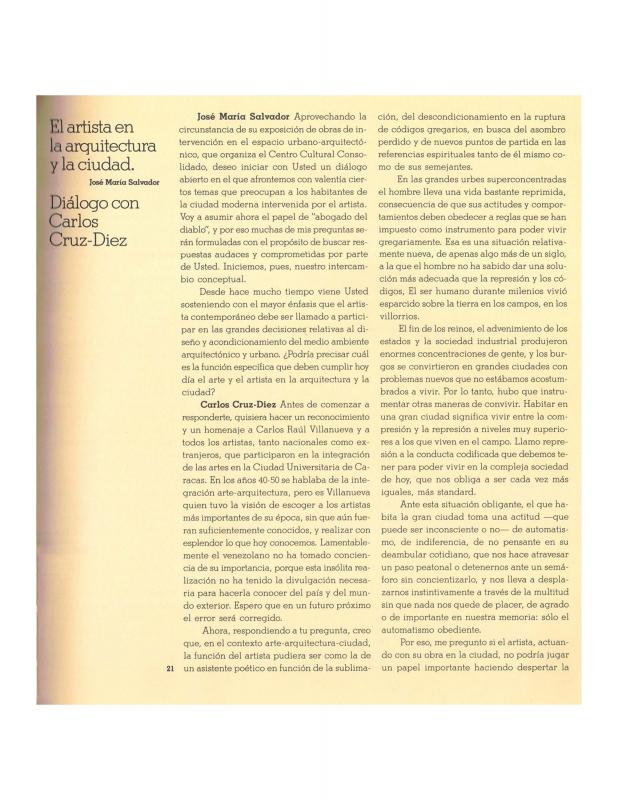One trait that characterizes the art life of Carlos Cruz-Diez (b. 1923) is his continual mulling over theory along with the experimentation with the color phenomena that emanate from his artwork. Given the history of Modern art, the artist arrived at Abstract art on the late side. Although he was a friend and colleague of his generation, specifically, of both Jesús Soto and Alejandro Otero, Cruz-Diez felt no need to follow their move to Paris in the 1940s or 1950s. Neither was he involved in debates about art, since at the time, his commitment was to the social problems of his country, and his painting seemed to fit into the trend of social realism. After a long process of questioning and thinking, he began to experiment with Abstract art in 1954, focusing his interest on color phenomena. Contributing to his about-face was his experience in the advertising world (as an art director at McCann Erikson, Caracas) and with printing presses. He created the first work in the Fisicromías series in 1959, and in 1960, he presented the exhibition Cruz-Diez. Fisicromías y Color Aditivo first at the Museo de Bellas Artes and later at the School of Architecture of the Universidad Central de Venezuela (both in Caracas). This document (dated February 1960) is from the catalogue of that exhibition. The fact that the public response to his show was apathetic influenced his decision to move to Paris in 1960, in search of a better reception. Although brief, “Un nuevo concepto del color” is essential for an understanding both of his work and of his intellectual world. Here, the artist raises theoretical and phenomenological problems about color and its behavior. His enthusiasm about this subject led him to a point at which it became the raison d’être of his thinking and the artwork he created. Later, Cruz-Diez would develop these ideas in greater depth in his book Reflexiones sobre el color (Caracas: Ediciones Fabriart / Carlos Cruz Diez, 1989). [For other texts on the artist’s work, see the ICAA digital archive: Jean Clay’s essay (Untitled) [“Pronto hará ocho años que Carlos Cruz-Diez...”] (doc. no. 858602); Victor Guédez’s article “Vertientes plásticas y estéticas en Carlos Cruz-Diez “(doc. no. 857000); Frank Popper’s study “Cruz Diez: el acontecimiento color” (doc. no. 861671); Freddy Carreño’s text “Carlos Cruz-Diez: el color más allá de la materialidad” (doc. no. 858046); Plinio Apuleyo Mendoza’s interview “Entrevista a Cruz Diez [No imitamos, nos imitan]” (doc. no. 862938); and one more interview “El artista en la arquitectura y la ciudad: Diálogo con Carlos Cruz-Diez” by José María Salvador (doc. no. 858069)].

